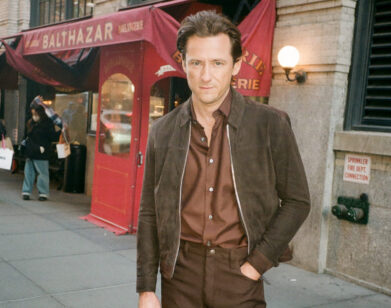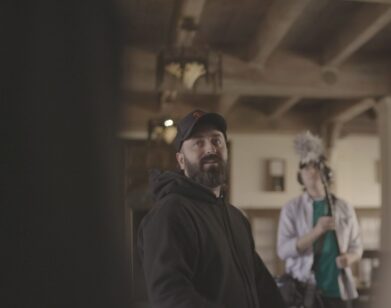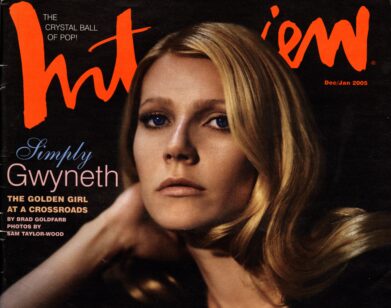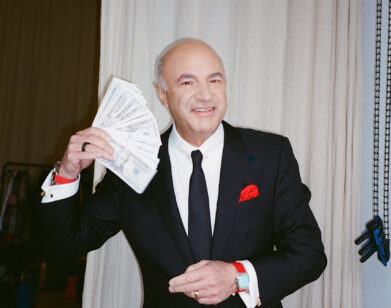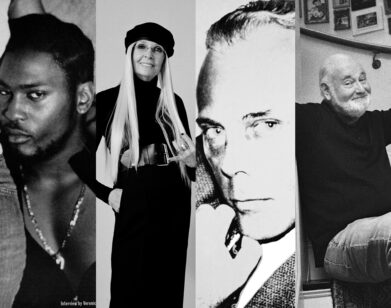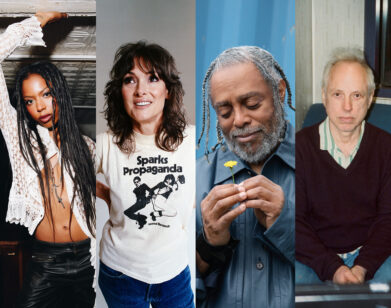Justin Kurzel Finds Hell in Snowtown
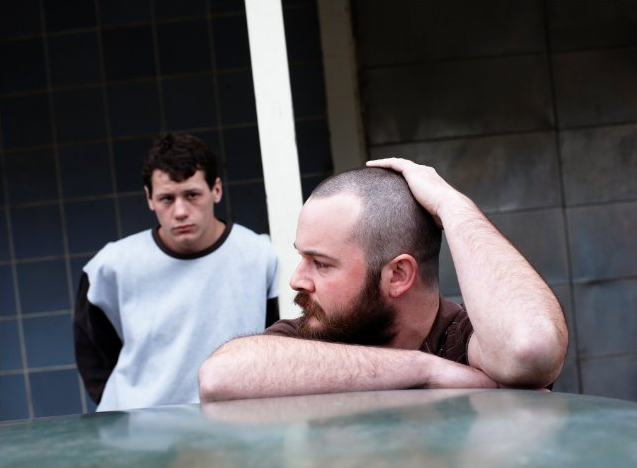
ABOVE: JAMIE (LUCAS PITTAWAY) AND JOHN (DANIEL HENSHAW) IN JUSTIN KURZEL’S THE SNOWTOWN MURDERS.
John Bunting, widely known as Australia’s most notorious serial killer, had a hand in a dozen murders throughout the 1990s before being apprehended and imprisoned—and his protégé, teenager Jamie Vlassakis, was along for the ride. In his feature debut, The Snowtown Murders, Australian filmmaker Justin Kurzel tells Bunting’s story through Vlassakis’ eyes, unflinchingly and, somehow, sympathetically.
Growing up in rural Australia with his single mother in the mid-1990s, Vlassakis needs a dad. Sexually abused by a neighbor and adrift in his search for a masculine role model, at first his mother’s new boyfriend, seems like a godsend to Jamie—a man who cares about him, who is deeply invested in his community, who treats him like an adult and like a man.
As Vlassakis and his family become more entrenched with Bunting and his associates, though, things turn sinister, Bunting’s inherently violent nature revealing itself shade by shade. It doesn’t take long for Vlassakis to become deeply, inextricably involved in Bunting’s life—and, ultimately, in the torture and murders for which Bunting would become infamous.
Unsettling throughout—and at times extremely violent, though never gratuitously so—The Snowtown Murders depicts Vlassakis’ corruption at the hands of his father figure with surprising, terrifying grace. Kurzel handles the subject matter with the clarity and control of a much more seasoned director; The Snowtown Murders bears comparison to more than one of Gus Van Sant’s best films. We spoke with him this week about his careful approach to some of his country’s most disturbing recent history.
ALEXANDRIA SYMONDS: What drew you to the subject of the Snowtown murders?
JUSTIN KURZEL: I was born very close to where the events took place. Like everyone in Australia, when the guys were arrested, I only knew about as much as what was being reported—which was this freak show, this kind of bodies-in-the-barrels, macabre story. Eleven people tortured and murdered and chopped up and eaten. I didn’t really know much more about it than that. So, when I read this script, this point of view of this kid involved and this kind of corruption of innocence and this incredible relationship between a father-figure-slash-serial-killer and a young man was pretty compelling stuff. I saw a perspective in the story that I hadn’t seen before: “Wow, this is a really incredible way of telling this story,” and reinvestigating these events in a much more human way.
SYMONDS: The title was changed for American distribution—it was just called Snowtown in Australia, presumably because anyone in Australia would immediately associate that word with John Bunting? Is that fair to say?
KURZEL: Yeah. There’s so much baggage attached to that name that all you have to do is put the name “Snowtown” on a poster and people know the context of it straight away.
SYMONDS: Was it intimidating for your first feature, then, to tackle a case the details of which are so widely known in your home country?
KURZEL: Absolutely. I was kind of petrified of doing it, tried to find every excuse possible not to do it. I just found the material so compelling and interesting. I was very lucky, Warp Films Australia just set up their office through Anna McLeish and Sarah Shaw in Australia, and they came to do some really brave and interesting films. I put forth my vision for the film, which was to shoot in the area and use first-time actors and do it in a pretty uncompromising way. They completely thought that that was the best way to go as well.
There comes a point with something like this where you have so many things up against you that when you sit down and have a really hard look at what you’re up against, you get in a fetal position and start crying. There comes a point where you have to just leap off the cliff and hope you’re going to land on your feet with something like this. And I think that was sort of brave, because it made us feel it all the way through, and we were really striving to make the same film—and to the producers’ credit, that was something that they were really faithful to all the way through.
SYMONDS: You wrote the film as well as directing it?
KURZEL: I sort of co-wrote. The screenplay was still Shaun’s, and it changed quite a bit after I came on. It was probably a little bit more of a genre film—it had police in it. I guess Shaun and I, together, were able to consolidate the real point of view in the film with Jamie, and stick with that 100 percent. The journey of the film is his journey, so that’s something that the two of us both developed.
SYMONDS: Sure. How much of the content of the film came from research and how much of it was fictionalized?
KURZEL: It was all pretty much what was available to us in the books and the transcripts and our own interviews. There were maybe some moments in the characterization where we were taking an imaginative interpretation, but they all felt very consistent to what we knew of the real people. It’s an interpretation. Any film is—even documentaries on real events, they’re interpretations. We made sure and were very adamant that we weren’t going to fictionalize any of the actual events and the victims and the murders. We needed to have an integrity that felt very true and honest.
SYMONDS: I’m interested in the idea of Jamie as protagonist. You go into this film knowing the protagonist is this guy who’s eventually going to be charged with four murders, and you have an idea of what sort of person he’s going to be. But the way he’s presented in the film is not as a psychopath at all, but as this kind of kid who’s completely influenced by his environment, kind of just looking for someone to lead him. I’m curious if you think that’s true of the real Jamie? If his mother’s boyfriend was a different type of person, do you think his fate would have been different?
KURZEL: I guess the question that I asked was, “What would I have done?” Definitely [something] in that environment which I think is really common is young men looking for father figures. I think that there are a lot of young boys that have come from broken families that are desperately searching for that coach or preacher, a figure that is going to give them a sense of identity and masculinity. I really understand that. That’s something that I really connected to within Shaun’s script, so I understand the sense of apathy that he was leading with.
Jamie kind of felt, you know, what he was worth. And he wouldn’t change that because that’s what he thought he deserved. And the idea of John coming in and going “You can’t play a victim all your life,” and “You don’t deserve this. The shit that’s happening to you is wrong,” and “You can change it. How about we start off with killing this dog?” I kind of get the sense of Jamie being seduced by that and John empowering him with an identity and a sense of self and masculinity. So that dynamic, which becomes the most important thing in the film, in terms of how this boy is exploited by John, and how this boy becomes a serial killer—which doesn’t lead to his salvation, but actually to his redemption, but really leads him to hell—I found that to be a pretty compelling story.
SYMONDS: It’s really sad.
KURZEL: It really is. It could have been a different way—he could have joined up with that football club down the road. You know, he might have found something that would have led him to a much more pleasant place. But, the tragedy was that, at the time, there weren’t communities that would support and provide leadership to prevent something like that from happening.
SYMONDS: I’m also curious at to your sense of what makes John tick. I think he makes clear, on a surface level, how much he hates gay people and pedophiles, but there are certain things in the film that suggest, to me, at least, that he was protesting too much. Was that something you were going for?
KURZEL: I guess my interpretation of it was, and I’m not trying to speak for the real John, but my interpretation was that the ideology was genuine, that he genuinely felt that there were injustices and that his community and his family were not being listened to. And then he genuinely wanted to help. And I think he enjoyed the sense of family, he enjoyed being around a family, and enjoyed the responsibilities of being a father and providing order and being present, and being looked up to. But that was also heavily corrupted by his psychopathic impulse to kill. I think he was already opposed to things, and I think what’s really interesting is the friction of John. That was always what we were pushing for, between saving this family and destroying it. It was definitely the dynamic that Dan and I talked about constantly, as a reference point for his characterization.
SYMONDS: How Method was Daniel in his approach to the role? Was filming the movie fun at all?
KURZEL: It was a bit intense to get through at times, but what was most intense was filming the same take over again. The three minutes of a take, the half an hour leading up to it and then afterwards, were the most traumatic sort of moments. But really, and this is no disrespect to the events that we were depicting, it was a really very soft, friendly, fun set. We had to get through what we were filming, you know. We didn’t have a lot of staff on-set, everyone was picking everything up and moving it around, we didn’t have any egos. It was all fresh and new; because it was our first film, we cast a lot of people for the first time. There was just a natural sense of camaraderie. It was something that we definitely used in between takes to allow us to come out of the dirt of the whole macabre intensity of the story. The story was very human as well, and a lot of the things had to with family and relationships, many common things that we all experience.
Dan’s performance was—he started off with a lot of intimidation about the role, about playing a serial killer, what that was. He came down and spent about ten weeks in the area. He’d read books about killers, and it wasn’t that helpful, because the guy, John, was the opposite to that: he was very personable and social and someone that people gravitated towards. Really, what I wanted Dan to do was to immerse himself in the community and meet as many people as possible, and form genuine relationships with the cast, in the most simple way, which was to talk, and to go camping, and to cook. So once relationships were established, naturally, the dynamic on set really reflected the new dynamic in the story.
SYMONDS: Is it hard to do such graphic violence on such a low budget?
KURZEL: There was definitely some technical expertise there. A lot of it was really true performance. That was the hardest thing, was being able to maintain an intensity in the performance over two days, which was how long the bathroom scene took to shoot. It happens in real time, too; it happens over seven minutes on the screen. But then over two days, you have to bring everyone back into that frame of intensity. Continuity in the film, that was really, really tough. But you’re not dealing with tricks. I wasn’t doing some stylistic choice in terms of shooting, it was very raw and real and happening in front of you. You just have to make sure that whatever was in front of the camera felt truthful enough and not too stylized or artificial.
SYMONDS: You mentioned genre before, that it had sort of been more of a genre film when you originally got the script. How would you classify it now, if you had to? As a horror film, a crime film…?
KURZEL: I don’t know, I think it’s a drama. To me, it’s almost like a love story, really, between father and son. It’s definitely not a horror film. The violence doesn’t lead the film like violence usually does in a horror film. I think you spent the most time in the film with John and Jamie, and the building of that relationship and the dismantling of it. To me, it’s a love story between a father and a son.
THE SNOWTOWN MURDERS IS OUT IN LIMITED RELEASE.

